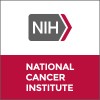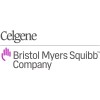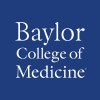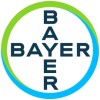
Lenalidomide and Blinatumomab for the Treatment of Relapsed Non-Hodgkin Lymphoma
Recurrent Burkitt LymphomaRecurrent Diffuse Large B-Cell Lymphoma24 moreThis phase I trial studies the side effects and best dose of lenalidomide and blinatumomab when given together in treating patients with non-Hodgkin lymphoma that has returned after a period of improvement (relapsed). Biological therapies, such as lenalidomide, use substances made from living organisms that may stimulate or suppress the immune system in different ways and stop cancer cells from growing. Blinatumomab is a monoclonal antibody that may interfere with the ability of cancer cells to grow and spread.

High Dose Therapy and Autologous Stem Cell Transplantation Followed by Infusion of Chimeric Antigen...
Non-Hodgkin's LymphomaThe purpose of this study is to test the safety of delivering the patients' own immune cells, called T cells, after the high-dose chemotherapy (HDT) and autologous stem cell transplantation (ASCT).

Lenalidomide Plus Rituximab Followed by Lenalidomide Versus Rituximab Maintenance for Relapsed/Refractory...
LymphomaNon-HodgkinFollicular lymphoma (FL), marginal zone lymphoma (MZL), and mantle cell lymphoma (MCL) are distinct histologic types of B-cell NHL. Lenalidomide is an immunomodulatory agent with direct and immune-mediated mechanisms of action, as well as clinical activity in NHL. Recent studies in frontline and relapsed/refractory NHL show high activity for lenalidomide plus rituximab (R2), supporting further study of this combination.

Activated T Lymphocytes Expressing CARs, Relapsed CD19+ Malignancies Post-Allo HSCT(CARPASCIO)
Non-Hodgkin's LymphomaB-Cell ALL1 morePatients have a type of lymph gland cancer called Non-Hodgkin Lymphoma (NHL), acute lymphocytic leukemia (ALL) or chronic lymphocytic leukemia (CLL) (these diseases will be referred to as "lymphoma" or "leukemia"). The lymphoma or leukemia has come back or has not gone away after treatment (including the best treatment known for these cancers). Because there is no standard treatment for this cancer at this time, subjects are asked to volunteer to be in a gene transfer research study using special immune cells. The body has different ways of fighting infection and disease. No one way seems perfect for fighting cancers. This research study combines two different ways of fighting disease, antibodies and T cells, hoping that they will work together. Both antibodies and T cells have been used to treat patients with cancers; they have shown promise, but have not been strong enough to cure most patients. T cells can kill tumor cells but there normally are not enough of them to kill all the tumor cells. Some researchers have taken T cells from a person's blood, grown more of them in the laboratory and then given them back to the person. The antibody used in this study is called anti-CD19. This antibody sticks to cancer cells because of a substance on the outside of these cells called CD19. CD19 antibodies have been used to treat people with lymphoma and leukemia. For this study, the CD19 antibody has been changed so that instead of floating free in the blood it is now joined to the T cells. When an antibody is joined to a T cell in this way it is called a chimeric receptor. The T lymphocytes will also contain CD28, which stimulates T cells and makes them last longer. Treatment with CD19/CD28 chimeric receptor-T cells has had activity against lymphoma and leukemia when the cells are made from the patients affected by these diseases. In this study, investigators are going to see if this treatment works even better when they make these cells from a healthy stem cell donor. If investigators are not able to collect blood from the stem cell donor, they will collect blood from the subject to make the CD19/CD28 chimeric receptor-T cells. These CD19/CD28 chimeric receptor T cells are investigational products not approved by the FDA. The purpose of this study is to find the biggest dose of chimeric T Cells that is safe, to see how long T cells with this chimeric receptor last, to learn what the side effects are, and to see whether this therapy might help people with lymphoma or leukemia after a stem cell transplantation from a donor.

Gene Therapy and Combination Chemotherapy in Treating Patients With AIDS-Related Non-Hodgkin Lymphoma...
AIDS-Related Burkitt LymphomaAIDS-Related Diffuse Large B-cell Lymphoma4 moreThis pilot clinical trial studies gene therapy following combination chemotherapy in treating patients with acquired immune deficiency syndrome (AIDS)-related non-Hodgkin lymphoma. Placing genes that have been shown in the laboratory to inhibit the growth and spread of the immunodeficiency virus (HIV) into the patient's peripheral blood stem cells may improve the body's ability to fight HIV. Drugs used in chemotherapy work in different ways to stop the growth of cancer cells, either by killing the cells, by stopping them from dividing, or by stopping them from spreading. Giving gene therapy after combination chemotherapy may improve the body's ability to fight HIV and AIDS-related non-Hodgkin lymphoma.

Yttrium Y 90 Basiliximab and Combination Chemotherapy Before Stem Cell Transplant in Treating Patients...
Mature T-Cell and NK-Cell Non-Hodgkin LymphomaRecurrent Mature T- and NK-Cell Non-Hodgkin Lymphoma3 moreThis phase I trial studies the side effects and best dose of yttrium Y 90 basiliximab when given together with standard combination chemotherapy before a stem cell transplant in treating patients with mature T-cell non-Hodgkin lymphoma. Radioactive substances linked to monoclonal antibodies, such as yttrium Y 90 basiliximab, can bind to cancer cells and give off radiation which may help kill cancer cells. Drugs used in chemotherapy, such as carmustine, cytarabine, etoposide, and melphalan (BEAM), work in different ways to stop the growth of cancer cells, either by killing the cells, by stopping them from dividing, or by stopping them from spreading. Giving yttrium Y 90 basiliximab and chemotherapy before a stem cell transplant may help kill any cancer cells that are in the body and help make room in the patient's bone marrow for new blood-forming cells (stem cells) to grow. Stem cells that were collected from the patient's blood and stored before treatment are later returned to the patient to replace the blood-forming cells that were destroyed.

Copanlisib and Rituximab in Relapsed Indolent B-cell Non-Hodgkin's Lymphoma (iNHL)
Lymphoma,Non-HodgkinThe purpose of this study was to evaluate whether copanlisib in combination with rituximab is superior to placebo in combination with rituximab in prolonging progression free survival (PFS) in patients with relapsed iNHL who have received one or more lines of treatment, including rituximab and who either had a treatment-free interval of ≥ 12 months after completion of the last rituximab-containing treatment, or who are unwilling to receive chemotherapy/for whom chemotherapy is contraindicated on reason of age, comorbidities, and/or residual toxicity.

Study Evaluating the Safety and Pharmacokinetics of JCAR017 in B-cell Non-Hodgkin Lymphoma (TRANSCEND-NHL-001)...
Non-Hodgkin LymphomaDiffuse Large B Cell Lymphoma3 moreThis open-label Phase 1 study will evaluate the safety, PK, and antitumor activity of modified T cells (JCAR017) administered to adult patients with relapsed or refractory B-cell NHL. The dose and schedule of JCAR017 will be evaluated and modified, as needed, for safety and antitumor activity. We will also determine how long the modified T cells stay in the patient's body and how well JCAR017 works in treating patients with non-Hodgkin's lymphoma whose disease has come back or has not responded to treatment.

Gene Therapy in Treating Patients With Human Immunodeficiency Virus-Related Lymphoma Receiving Stem...
HIV InfectionMature T-Cell and NK-Cell Non-Hodgkin Lymphoma9 moreThis phase I/II trial studies the side effects and best dose of gene therapy in treating patients with human immunodeficiency virus (HIV)-related lymphoma that did not respond to therapy or came back after an original response receiving stem cell transplant. In gene therapy, small stretches of deoxyribonucleic acid (DNA) called "anti-HIV genes" are introduced into the stem cells in the laboratory to make the gene therapy product used in this study. The type of anti-HIV genes and therapy in this study may make the patient's immune cells more resistant to HIV-1 and prevent new immune cells from getting infected with HIV-1.

CPI-613 and Bendamustine Hydrochloride in Treating Patients With Relapsed or Refractory T-Cell Non-Hodgkin...
Adult Lymphocyte Depletion Hodgkin LymphomaAdult Lymphocyte Predominant Hodgkin Lymphoma15 moreThis phase I trial studies the side effects and best dose of CPI-613 when given together with bendamustine hydrochloride in treating patients with relapsed or refractory T-cell non-Hodgkin lymphoma or Hodgkin lymphoma. CPI-613 may kill cancer cells by turning off their mitochondria, which are used by cancer cells to produce energy and are the building blocks needed to make more cancer cells. By shutting off mitochondria, CPI-613 may deprive the cancer cells of energy and other supplies needed to survive and grow. Drugs used in chemotherapy, such as bendamustine hydrochloride, work in different ways to stop the growth of cancer cells, either by killing the cells, by stopping them from dividing, or by stopping them from spreading. Giving CPI-613 with bendamustine hydrochloride may kill more cancer cells.
